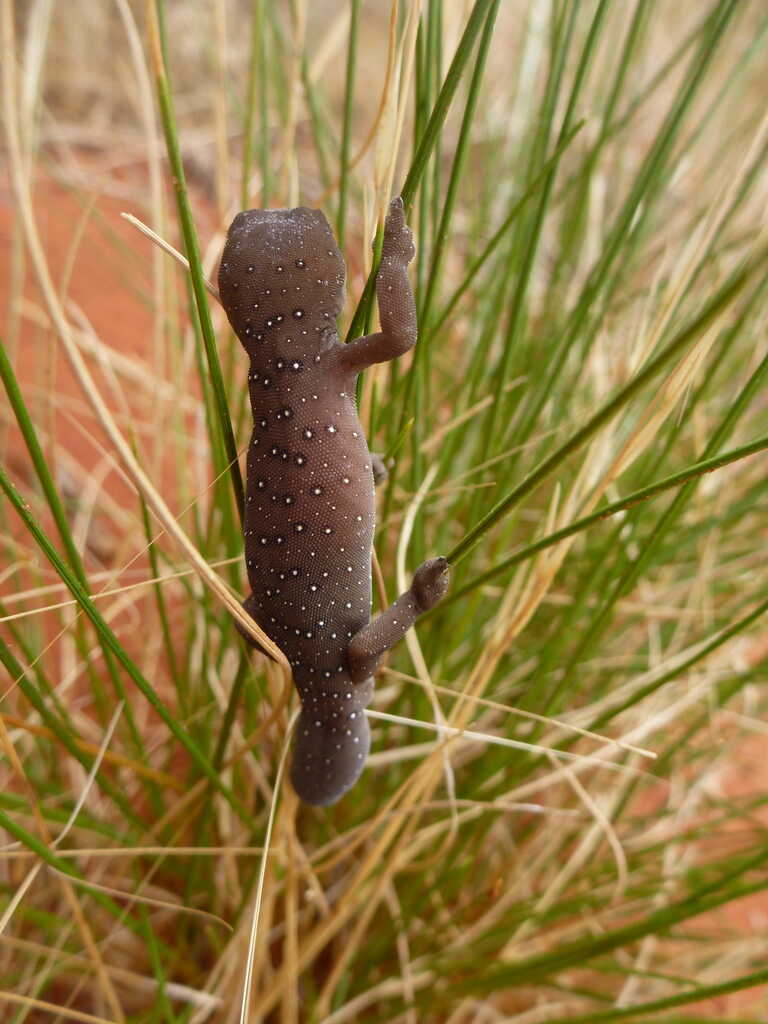{{{description}}}
Central Australia is a haven for lizards due to the dry climate. From well-known iconic species to peculiar ones, these lizards will impress you regardless of their size.
Endemic to Australia and Papua New Guinea, this species' (Lialis burtonis) main diet consists of lizards. The "burtonis" in its Latin name is there to commemorate Edward Burton, a surgeon of the British army back in the 1800s. The lizard is able to retract its eyes for protection. Learn more at https://en.wikipedia.org/wiki/Burton's_legless_lizard
Photo by Biodiversity Heritage Library (Public Domain Mark 1.0)
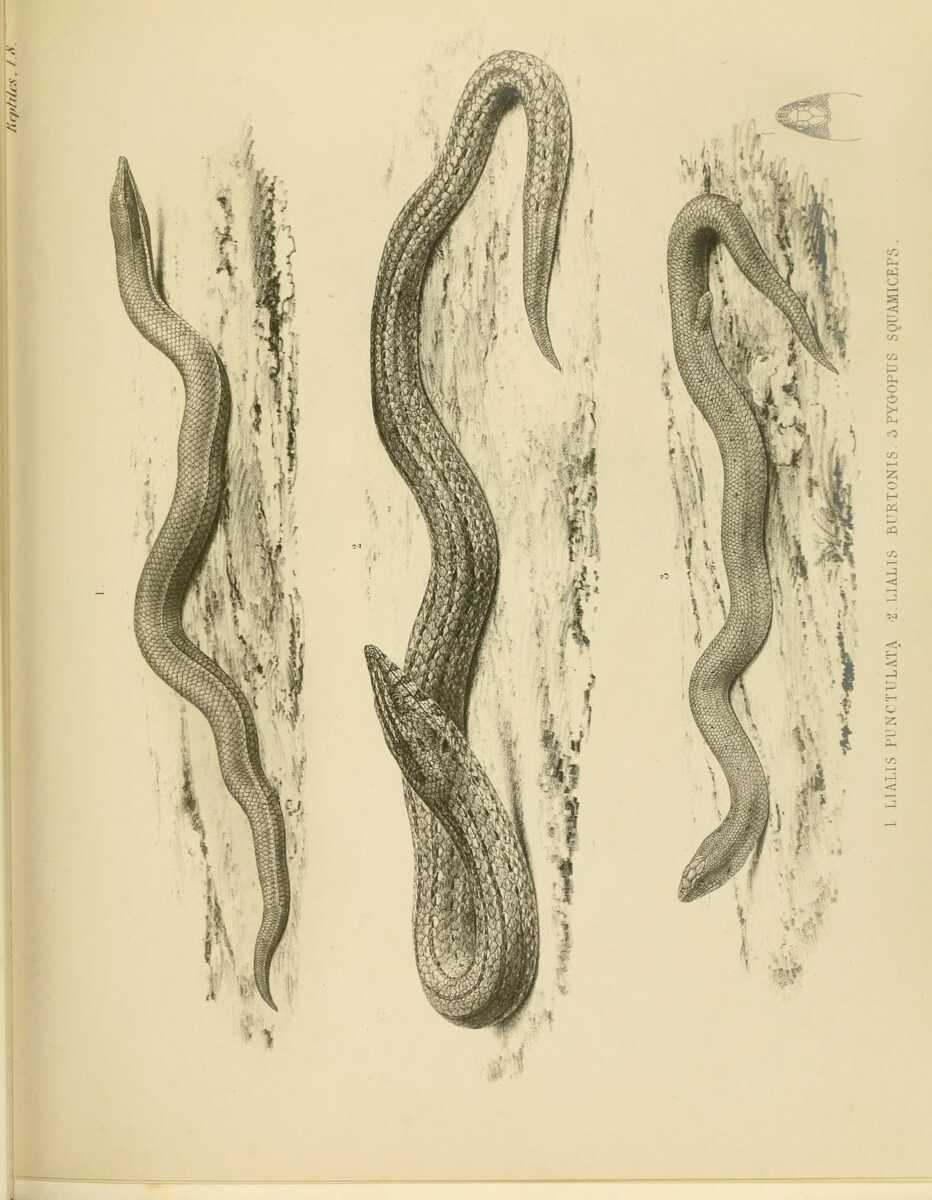
This species (Delma tincta) is named 'excitable' due to its energetic defence mechanism where it jumps around repeatedly in different directions. Its length can reach up to 30 centimetres. Feeding on insects as it makes its way through the vegetation, this animal usually hides during the day. Learn more at https://en.wikipedia.org/wiki/Excitable_delma
Photo by Stewart Macdonald (CC BY-SA 4.0)
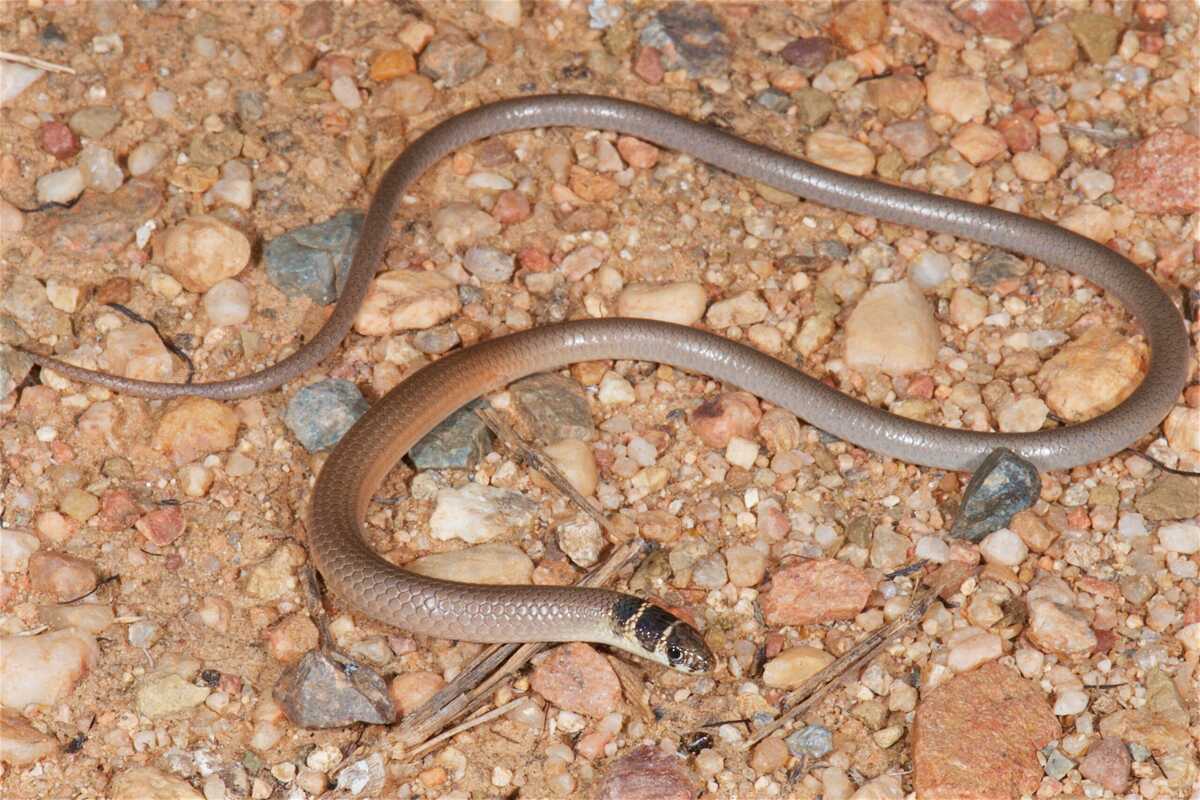
This species (Pygopus nigriceps) have many names like western hooded scaly-foot and the black-headed scaly-foot. The adults are 45 to 55 centimetres long, and the females of the species are typically bigger. If it's living in a relatively hot area (it usually does), this lizard forages by night. If the area is colder, it prefers daytime. Learn more at https://en.wikipedia.org/wiki/Hooded_scaly-foot
Also called the Kintore's Egernia, this species (Liopholis kintorei) is quite social. Being burrowing lizards, they tend to create up to 20 entrances to their burrows. Upper sides of the lizard have a rusty red-brown colour to them whilst their bellies are creamy-white. According to a research, this species cooperate as they build their burrows and can even have specific purposes for rooms. Learn more at https://alicespringsdesertpark.com.au/connect-with-nature/animals/animals/desert-skink
The panther skink (Ctenotus pantherinus) is a 25-centimetre lizard that is also called the leopard ctenotus. It can forage both during the day and at night as it is able to adapt to cooler temperatures as well. This feature lets the lizard feed on some juicy termites that provide water. The species can breed anytime between spring and summer, and the females can lay up to 11 eggs at once. Learn more at https://alicespringsdesertpark.com.au/connect-with-nature/animals/animals/panther-skink
Photo by AWS10 (CC0 1.0 Universal Public Domain)
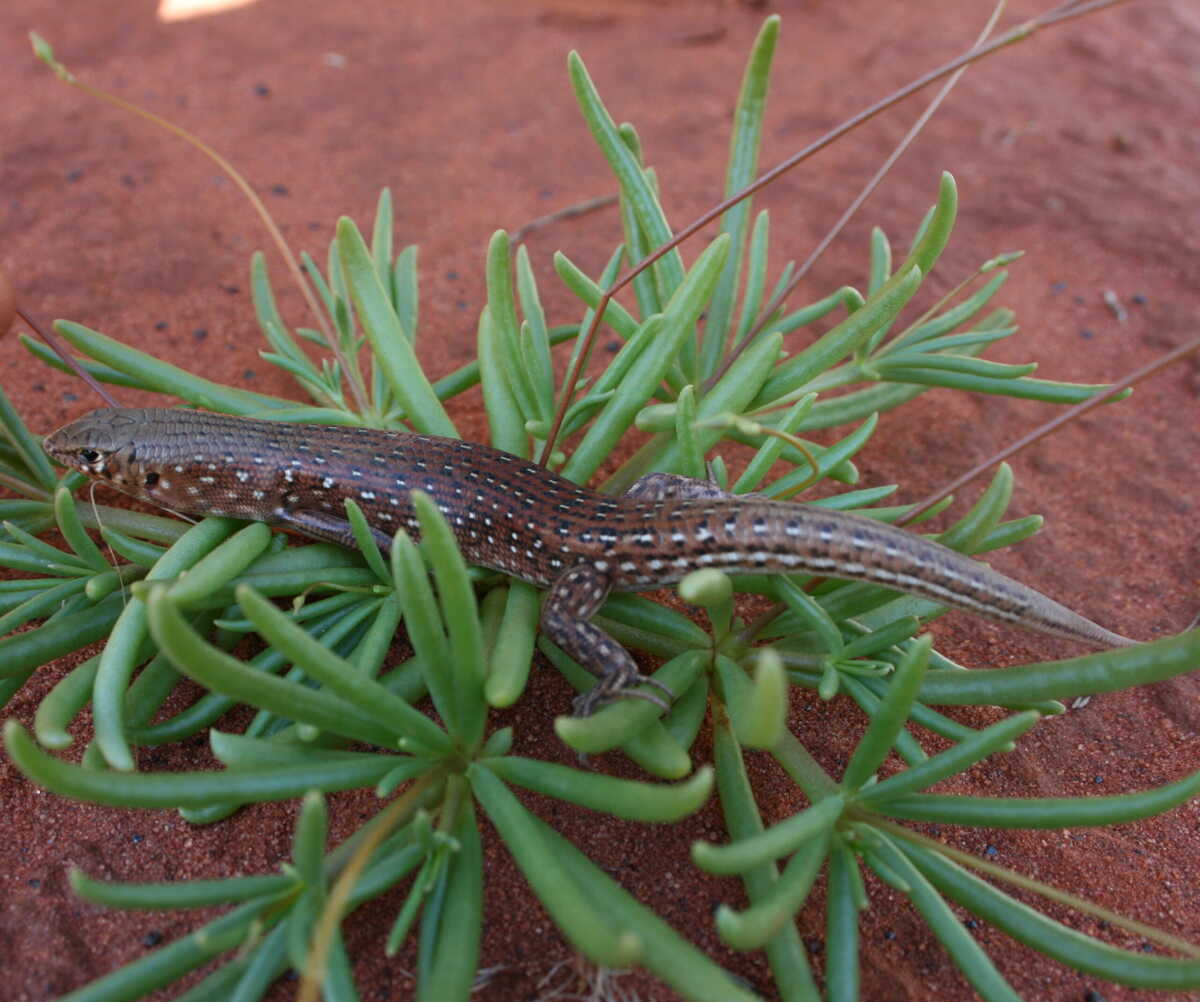
This species (Ctenotus regius) can only be seen o the Australian mainland, usually in the deserts of Central Australia. Also called the Pale-rumped Ctenotus, it is known for the stripes on its back and the white spots on either side. The lizard typically consumes insects, yet it can be seen feeding on plants from time to time. Learn more at https://en.wikipedia.org/wiki/Ctenotus_regius
Photo by Will Brown (CC BY 2.0)
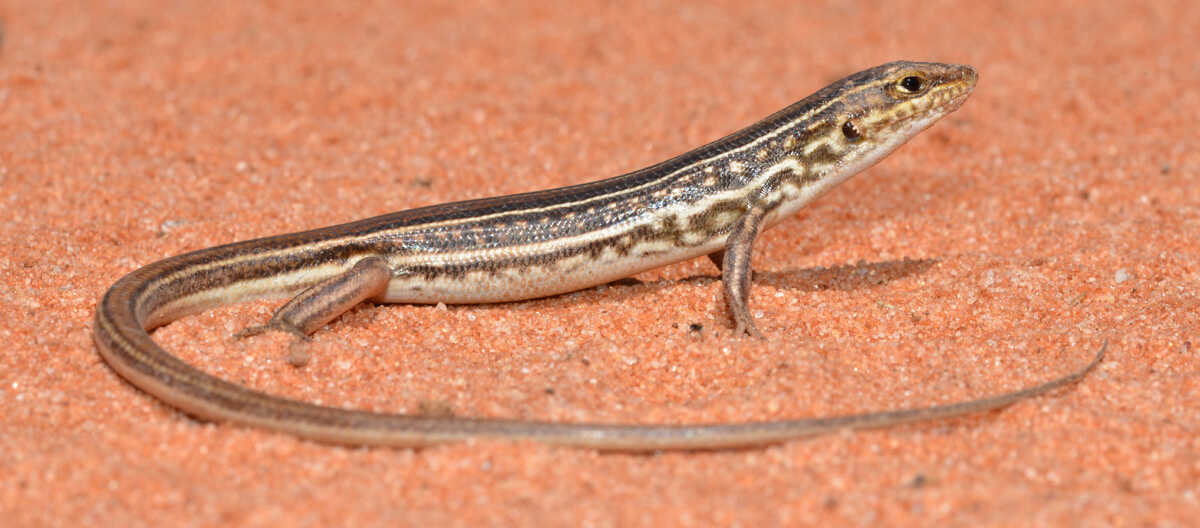
Being Australia's biggest lizard and the 4th biggest in the whole world, the perentie (Varanus giganteus) can grow up to an astounding 2.5 metres. Using "Jacobson's organ", it is able to identify different scents. It is an ectothermic animal, meaning you can see them 'sunbaking' (Australian term for sunbathing) to raise their body temperature. Usually found in rocky outcrops and gorges, it feeds both on live and dead prey. Learn more at https://alicespringsdesertpark.com.au/connect-with-nature/animals/animals/perentie
Photo by Christopher Watson (CC BY-SA 3.0)
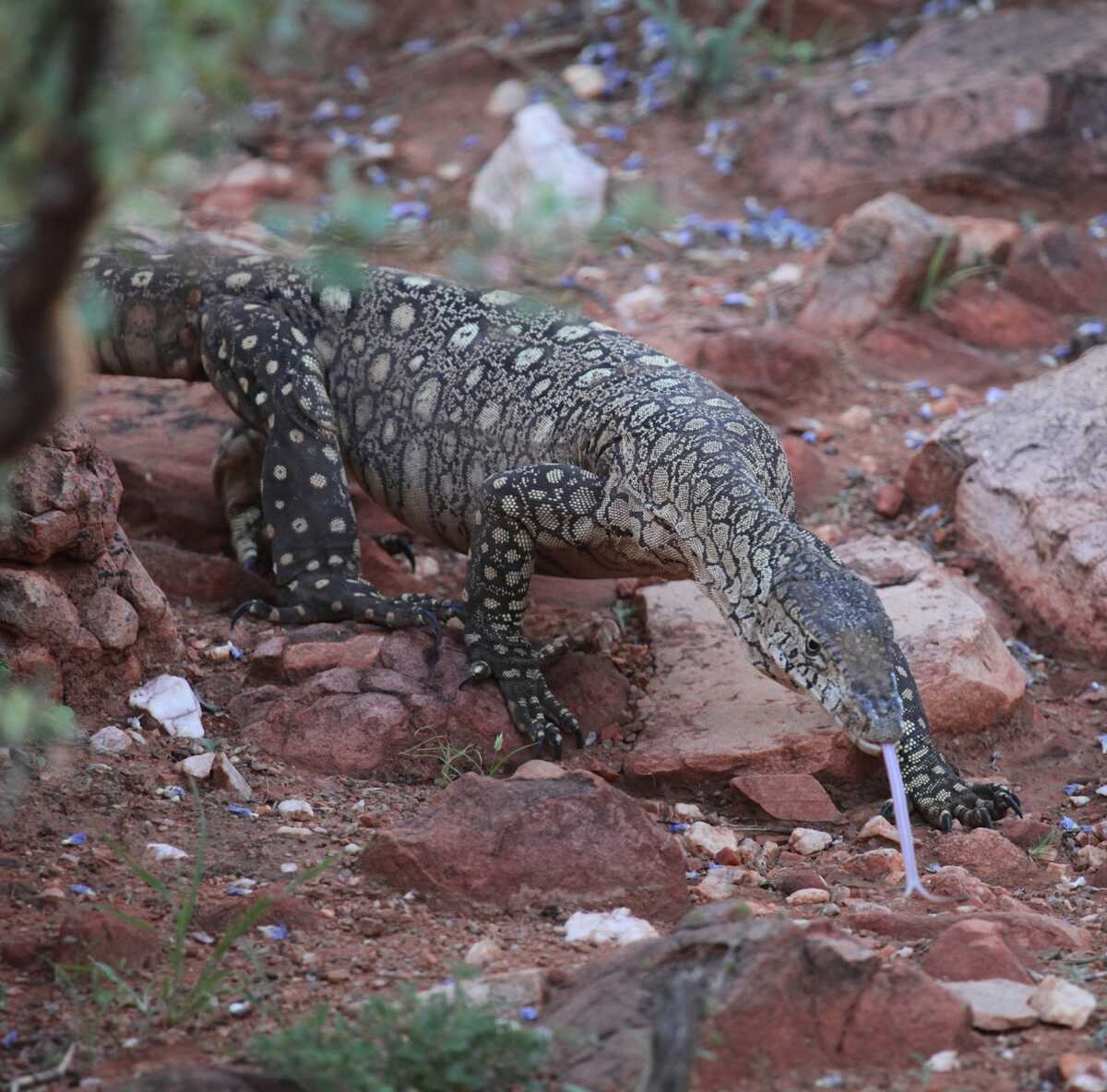
This 40-centimetre species (Varanus gilleni) is also called the Gillen's monitor, and it usually weighs around 70 grams. It feeds on insects, small mammals and eggs as well as other lizards. Due to its quite successful adaptation to dry conditions, this species dehydrates much slower (0.5x) than other Australian monitors. They tend to lay their eggs in burrows and cover them with sand from time to time. Learn more at https://alicespringsdesertpark.com.au/connect-with-nature/animals/animals/pygmy-mulga-monitor
Photo by Mark Marathon (CC BY-SA 3.0)

The Sand Goanna (Varanus gouldii) has many names: Gould's Monitor, Sand Monitor and Racehorse Goanna. Also, it is known as "Tingka" in Pitjantjatjara. The adults of this species are usually around 140 centimetres long. They are diurnal lizards, therefore foraging by day and taking shelter in their burrows by night. Learn more at https://en.wikipedia.org/wiki/Sand_goanna
Photo by Jean and Fred (CC BY 2.0)
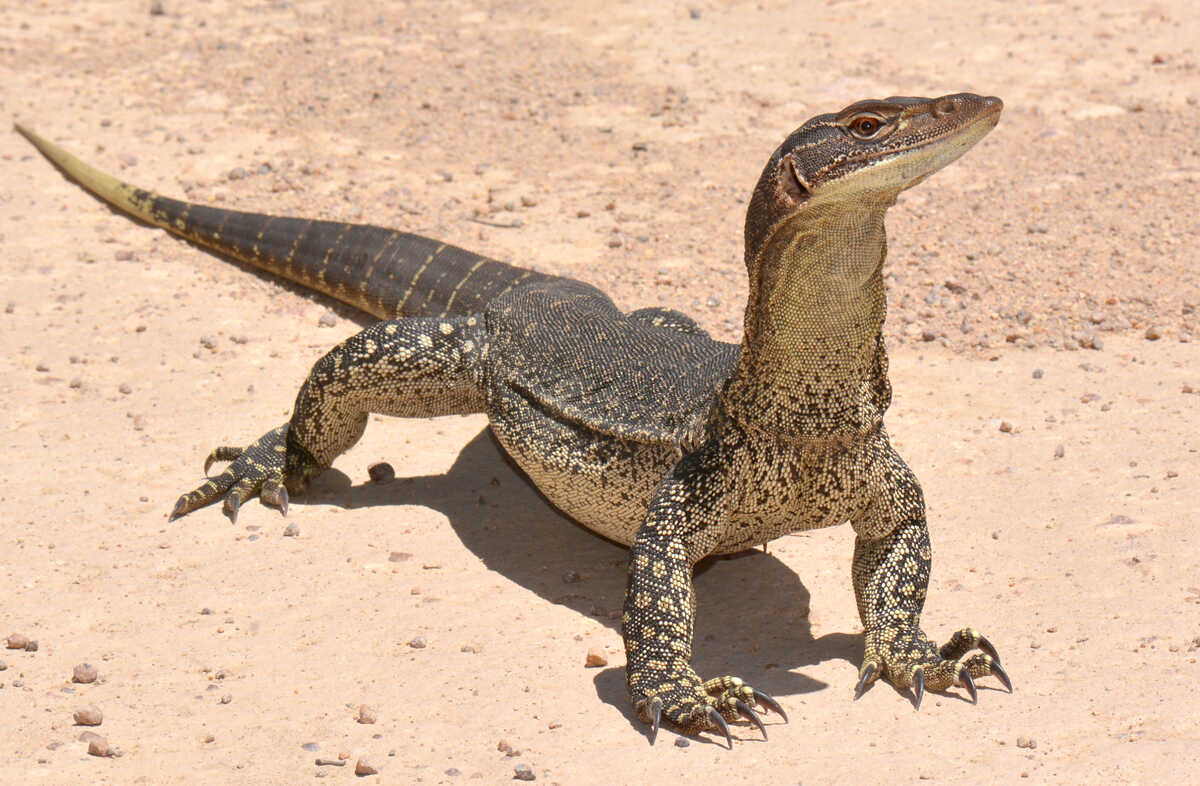
Also known as the black-tailed/mournful/freckled/racehorse monitor, this species (Varanus tristis) is the most common monitor species in Australia. Adult members can grow up to 80 centimetres long. Surprisingly, this lizard is able to consume the "Thorny Devil" (a robust dragon lizard that has spiky scales). It can be seen near water in woodlands and scrublands as well as deserts. Learn more at https://en.wikipedia.org/wiki/Black-headed_monitor
Photo by Christoph Baumann (CC BY-SA 3.0)
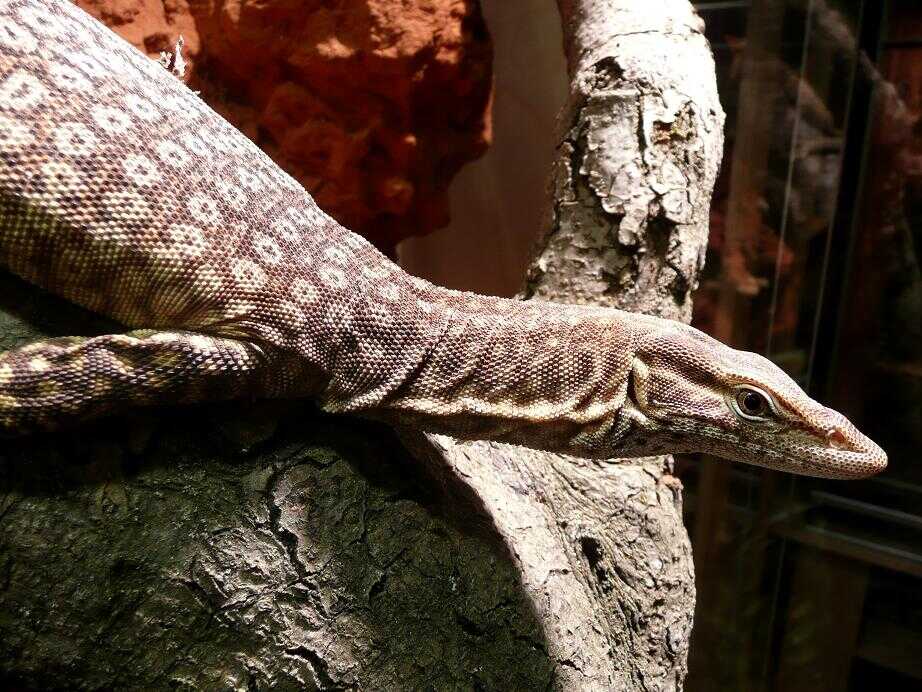
This species (Varanus acanthurus) is called the ridge-tailed monitor and Ackie's dwarf monitor as well. Officially, the adults of this species can grow up to 70 centimetres yet it may be possible that they can grow bigger (up to 86 cm). They are less active and have a slower metabolism in comparison to other monitor lizards. This species is able to get more than two-thirds of its water need from food. Learn more at https://en.wikipedia.org/wiki/Spiny-tailed_monitor
Photo by P. Brundel (CC BY-SA 3.0)
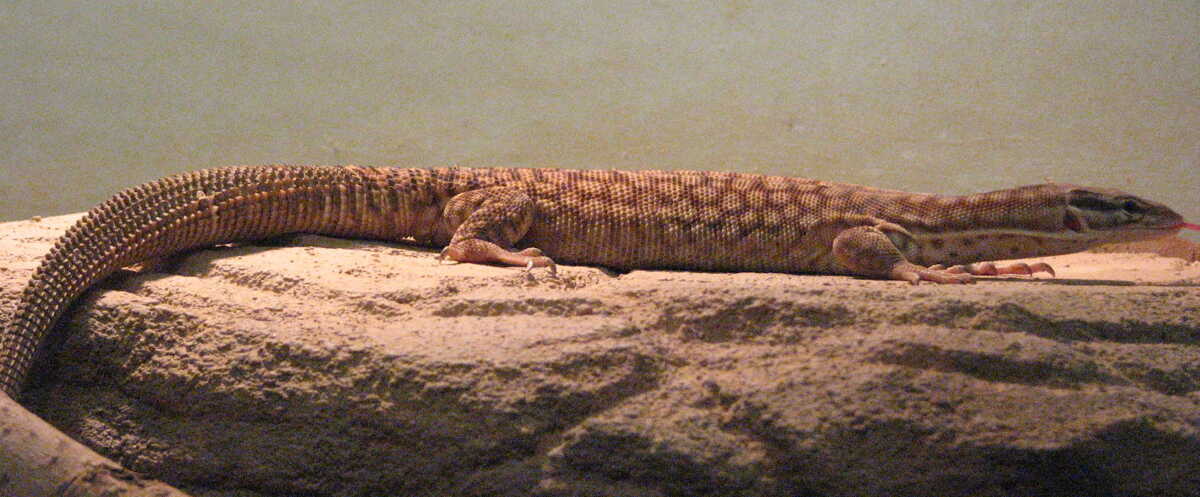
Endemic to Australia, this species (Diporiphora winneckei) is also called the canegrass two-line dragon, blue-lined dragon and Winnecke's two-pored dragon. The "winneckei" in its Latin name comes from Charles George A. Winneckei, an explorer and botanist of the late 1800s. Although it's a common species, it is quite hard to spot them because of the camouflage ability the lizard possesses. It has a slender body that measures around 20 centimetres, consisting of long limbs and a fairly long tail. Learn more at https://alicespringsdesertpark.com.au/connect-with-nature/animals/animals/canegrass-dragon
Photo by JennyKS (CC BY-SA 3.0)
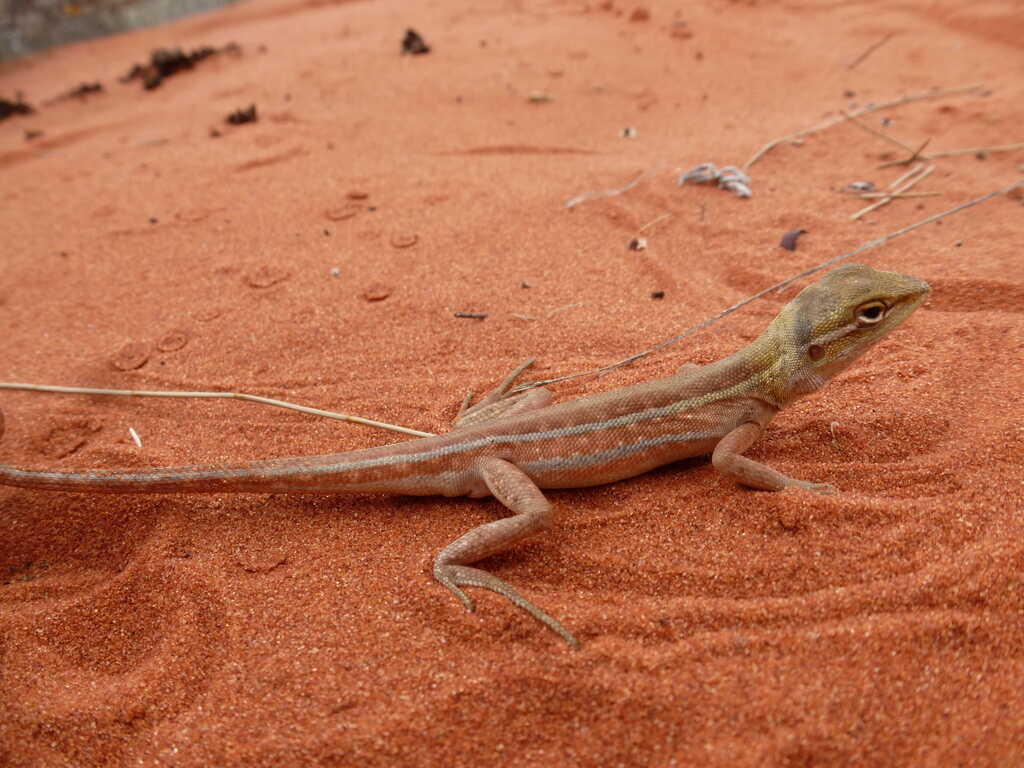
Also known as the central netted ground dragon, this species (Ctenophorus nuchalis) has a distinctive meshy pattern on its head and body, hence the name. The said pattern lets the lizard hide in plain sight in the right environment. You can come across this species in open (mostly sandy) areas that have less vegetation. It likes to have multiple burrows (around 7). Using head bobs and leg gestures, the species is able to communicate with its kin. Learn more at https://alicespringsdesertpark.com.au/connect-with-nature/animals/animals/central-netted-dragon
Photo by Tim Rudman (CC BY 3.0)

This iconic species (Moloch horridus) has quite a "spiky" look and it's almost impossible to mix it up with another species. Interestingly, they feed only on black ants. A trail of ants becomes a line of food as they use their sticky tongue to sweep them up from the ground. They can consume up to a thousand (and more) ants in just one meal, according to scientists. An adult thorny devil can reach 21 centimetres long and survive up to 15 years. Learn more at https://alicespringsdesertpark.com.au/connect-with-nature/animals/animals/thorny-devil
Photo by Bäras (CC BY-SA 3.0)
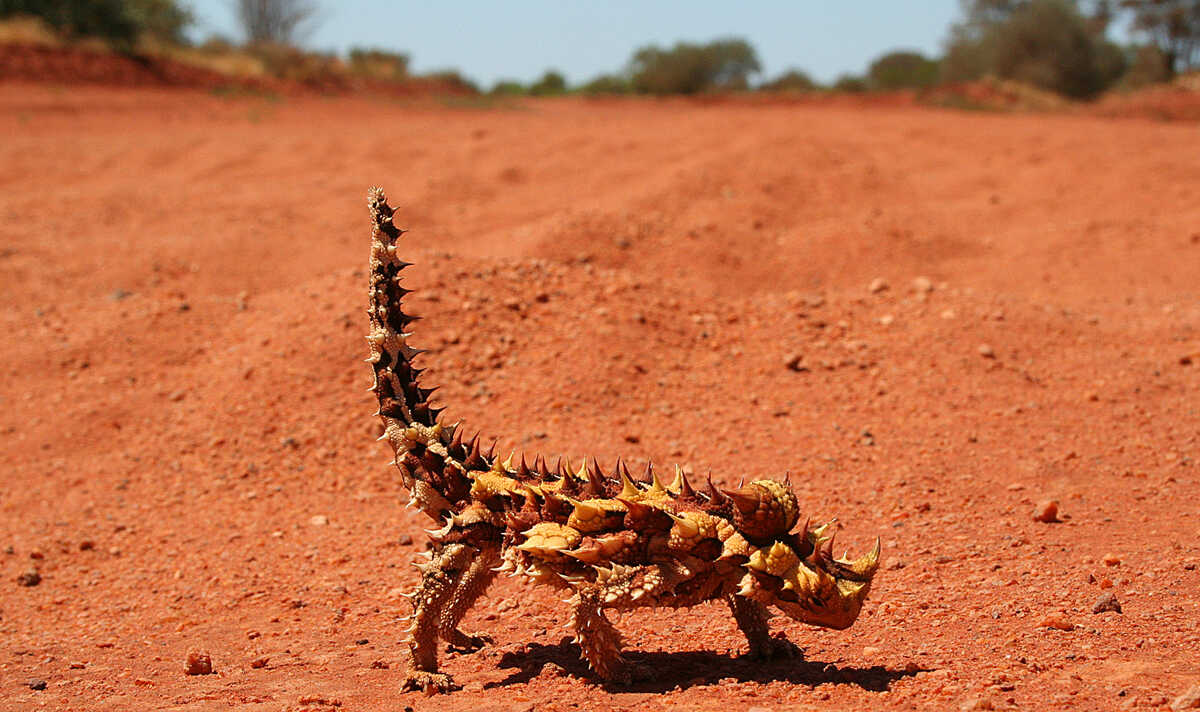
Also known as the long-tailed earless dragon, you can come across this mostly insectivore species (Tympanocryptis tetraporophora) in almost all kinds of habitats. They use head nods and push-ups to communicate with their kin. They "tripod" themselves to get more sunlight like meerkats. Learn more at https://alicespringsdesertpark.com.au/connect-with-nature/animals/animals/earless-dragon
Photo by Matthew Bonnett (CC BY-SA 4.0)
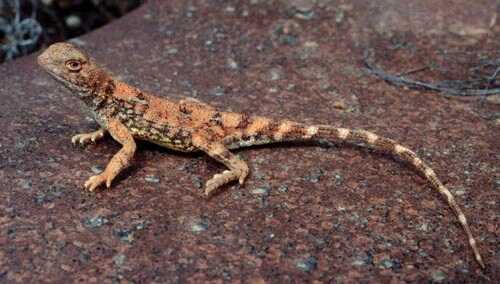
This well-known species (Pogona vitticeps) is actually the most popular reptile to keep as a pet in the whole world. Getting its name from the relatively darker area under its chin, this lizard can grow up to 60 centimetres. The tail typically is slightly longer than the body. When threatened, they hiss instead of vocalizing. They use arm and head gestures combined with displays of different colours to communicate. Learn more at https://en.wikipedia.org/wiki/Central_bearded_dragon
Photo by Frank C. Müller (CC BY-SA 2.5)
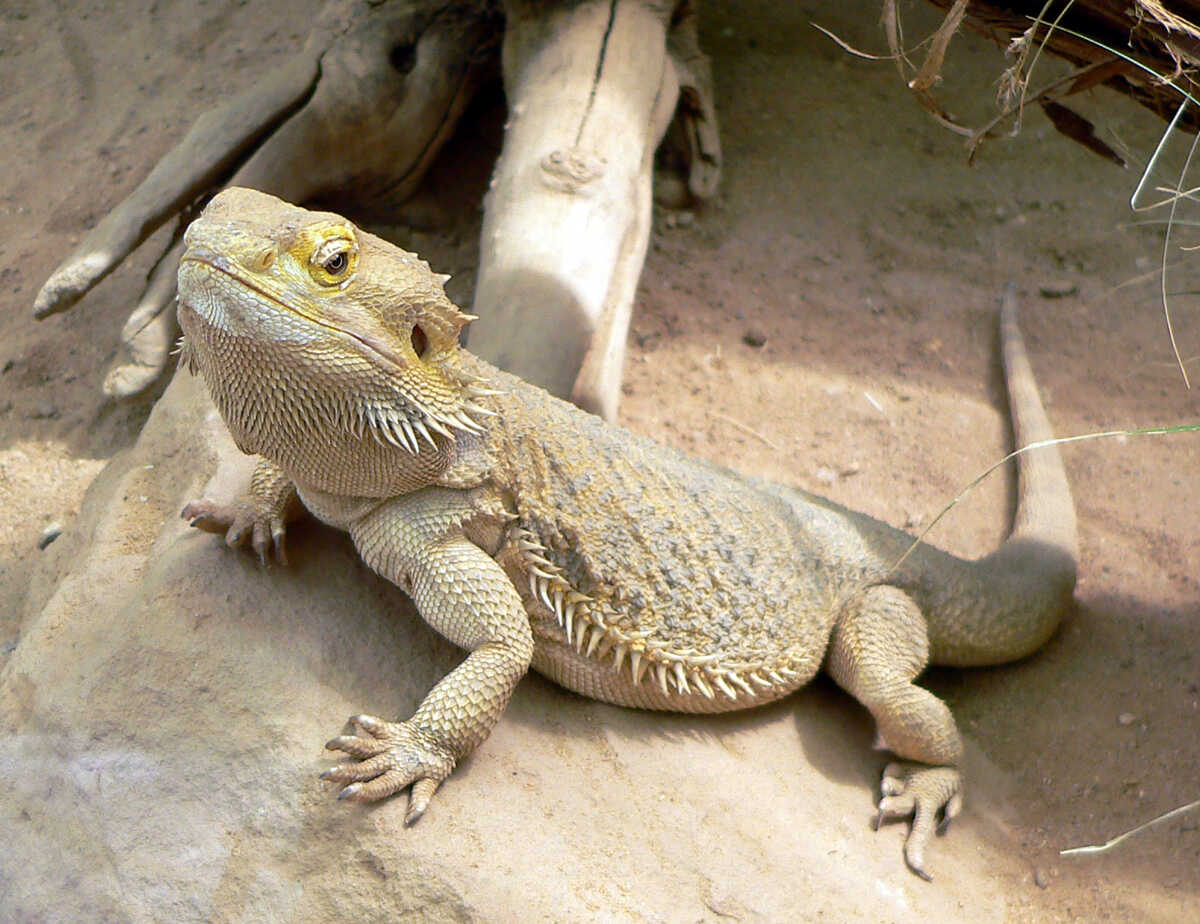
Also known as the "Variable Fat-tailed Gecko", this species (Diplodactylus conspicillatus) is endemic to dry areas of central Australia. You can spot them in sandy deserts that have a lot of spinifex. Adults of this species are around 60 centimetres long. They use their capable tongue to clean their eyes as their eyelids are immovable. These nocturnal animals rarely eat something else than termites. Learn more at https://en.wikipedia.org/wiki/Diplodactylus_conspicillatus
Photo by Katie Smith (CC BY 4.0)
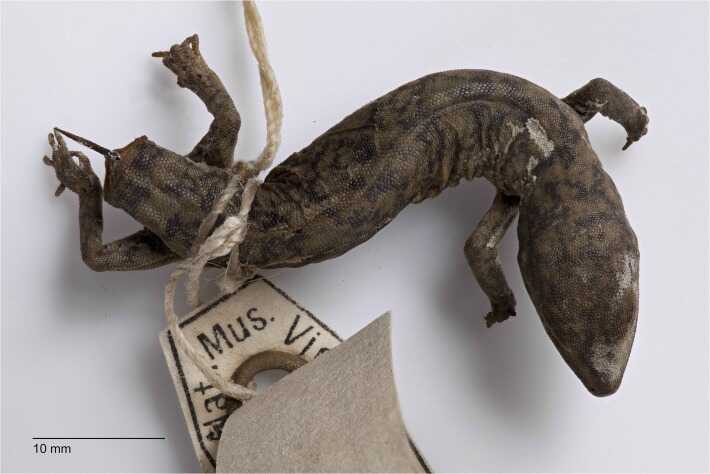
The Tree Dtella (Gehyra variegata), also known as the variegated/varied dtella is a lizard native to more central parts of Australia. It can both be found high above the ground or underground. It doesn't like to wander more than 10 metres away from home and gets the foraging done in the first 3 hours after dark. Typically living for 5 years, it grows into an adult in 3 years. Learn more at https://en.wikipedia.org/wiki/Gehyra_variegata
Photo by Will Brown (CC BY 2.0)
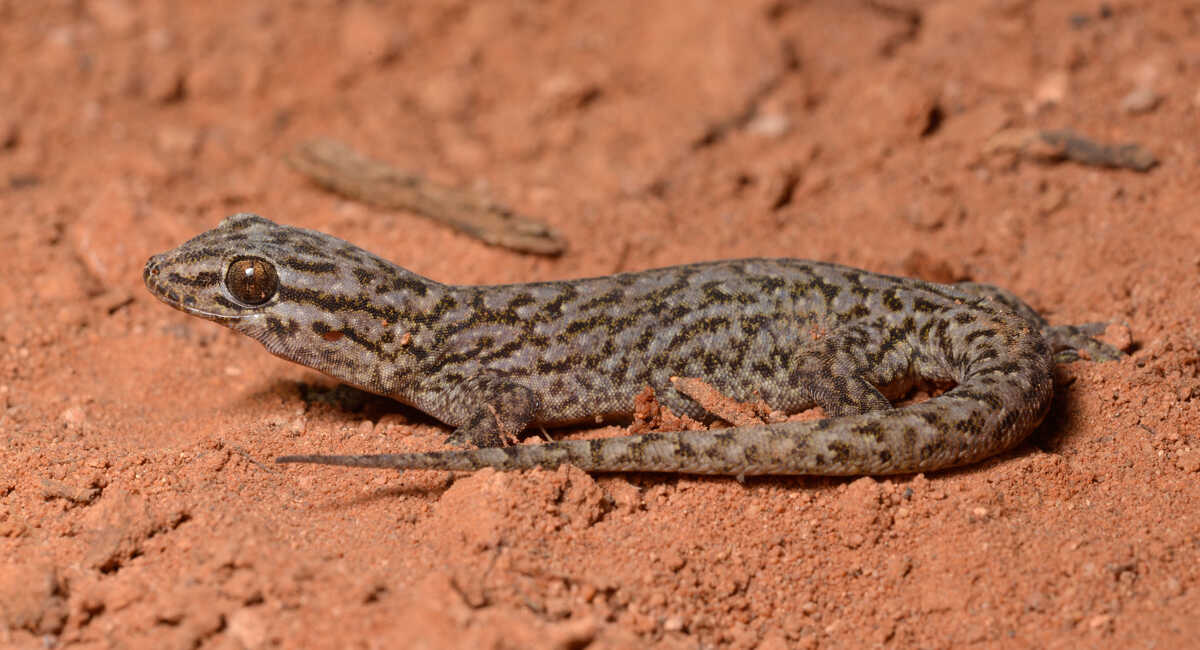
(Heteronotia binoei) Bynoe's Gecko (or the Prickly Gecko) is a lizard endemic to Australia. The word "binoei" from its Latin name is there to commemorate Benjamin Bynoe, a British naturalist/naval surgeon that sailed with Charles Darwin in the 1800s. Typically acting nocturnal, it tends to prey on invertebrates. Learn more at https://en.wikipedia.org/wiki/Heteronotia_binoei
Photo by JennyKS (CC BY-SA 3.0)
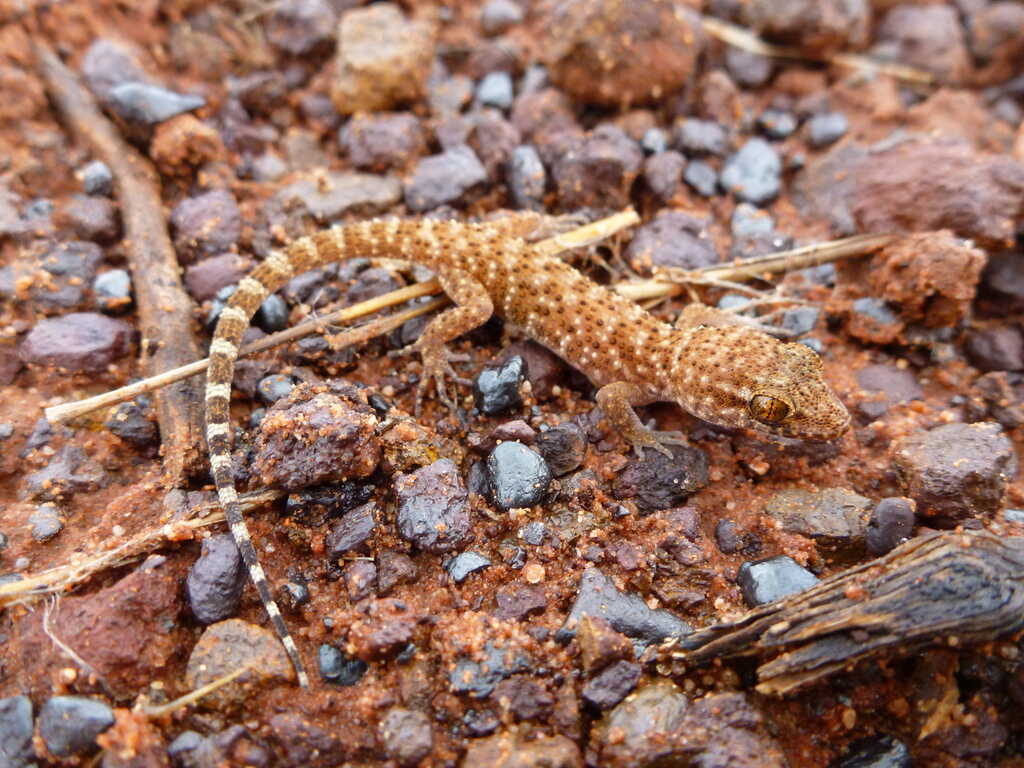
Endemic to Australia, the Jewelled Gecko (Strophurus elderi) is a lizard that has an average length of 7 centimetres. The 'elderi' word from its Latin name commemorates Thomas Elder, who was a philanthropist that introduced camels to Australia in 1866. This species likes to live in deserts, shrublands and grasslands. Learn more at https://en.wikipedia.org/wiki/Strophurus_elderi
Photo by JennyKS (CC BY-SA 3.0)
